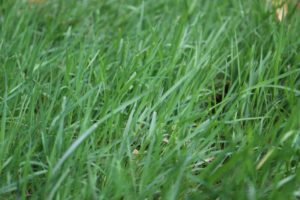Pollen Allergies and the Landscape
go.ncsu.edu/readext?684749
en Español / em Português
El inglés es el idioma de control de esta página. En la medida en que haya algún conflicto entre la traducción al inglés y la traducción, el inglés prevalece.
Al hacer clic en el enlace de traducción se activa un servicio de traducción gratuito para convertir la página al español. Al igual que con cualquier traducción por Internet, la conversión no es sensible al contexto y puede que no traduzca el texto en su significado original. NC State Extension no garantiza la exactitud del texto traducido. Por favor, tenga en cuenta que algunas aplicaciones y/o servicios pueden no funcionar como se espera cuando se traducen.
Português
Inglês é o idioma de controle desta página. Na medida que haja algum conflito entre o texto original em Inglês e a tradução, o Inglês prevalece.
Ao clicar no link de tradução, um serviço gratuito de tradução será ativado para converter a página para o Português. Como em qualquer tradução pela internet, a conversão não é sensivel ao contexto e pode não ocorrer a tradução para o significado orginal. O serviço de Extensão da Carolina do Norte (NC State Extension) não garante a exatidão do texto traduzido. Por favor, observe que algumas funções ou serviços podem não funcionar como esperado após a tradução.
English
English is the controlling language of this page. To the extent there is any conflict between the English text and the translation, English controls.
Clicking on the translation link activates a free translation service to convert the page to Spanish. As with any Internet translation, the conversion is not context-sensitive and may not translate the text to its original meaning. NC State Extension does not guarantee the accuracy of the translated text. Please note that some applications and/or services may not function as expected when translated.
Collapse ▲Did you know that allergies affect up to 30% adults and 40% of children? Every year, thousands of people suffer from allergies, a condition known as seasonal aller-gic rhinitis caused by exposure to substances such as mold, pet dander, dust mites and today’s topic, plant pollen. Symptoms may include sneezing, runny nose, nasal congestion, itchy and watery eyes and more.
Western North Carolina known for it’s diverse range of plants, trees and shrubs also has a wide range of pollen prevalent for 9 to 10 months of the year! Most allergy sufferers attribute their discomfort to plant pollen but the truth of the matter is, not all plants have the same likelihood of causing allergies. Plants that are wind pollinated have the highest potential to produce allergens impacting individuals on hot windy days while less so on wet rainy ones. Trees with allergen producing potential in-clude oaks, walnut, poplar and sycamore to name a few while other plants such as Kentucky bluegrass (if allowed to flower), orchard grass, pigweed, ragweed and lamb’s quarter are problematic for others. People’s sensitivity to certain plants can vary widely so always discuss your allergies with your health care professional.
Since many of these plants thrive throughout WNC, it’s impractical to completely eliminate the source of pollen. However, with careful consideration of each plants allergy potential, new plant selections can be established to alter a landscape set-ting. Plants with colorful or fragrant flowers, usually insect pollinated, are consid-ered “safe,” non-allergenic plants because they produce large, heavy pollen grains in relatively small amounts. Typically pollen are covered with a sticky substance and are not usually carried by wind. Some insect-pollinated plants do, however, produce pollen in amounts large enough to cause allergic reactions, such as Rus-sian Olives and Willows.
To minimize your exposure to pollen in the home landscape, several steps can be taken. Individuals can make informed decisions about plant materials choosing “safe” plants that have large or sticky pollen grains reducing the likelihood of trans-portation by wind and female cultivars which do not produce pollen at all. Allergy sufferers should avoid garden chores that aggravate their symptoms such as toiling in the com-post pile, working with mulch or straw, raking or mowing the grass. If unavoidable, then reduce your exposure by wearing gloves, a long sleeved shirt, hat, sunglasses or goggles and a pollen mask. Afterwards follow-up with a shower and a thorough washing of cloths. Keep grasses mowed at appro-priate heights (pre-seed) to decrease pollen production. Weeds, molds, and mildews should also be controlled. If there is an existing pollen problem in your landscape, replace that

plant with a less allergenic selection.




